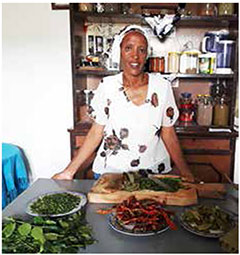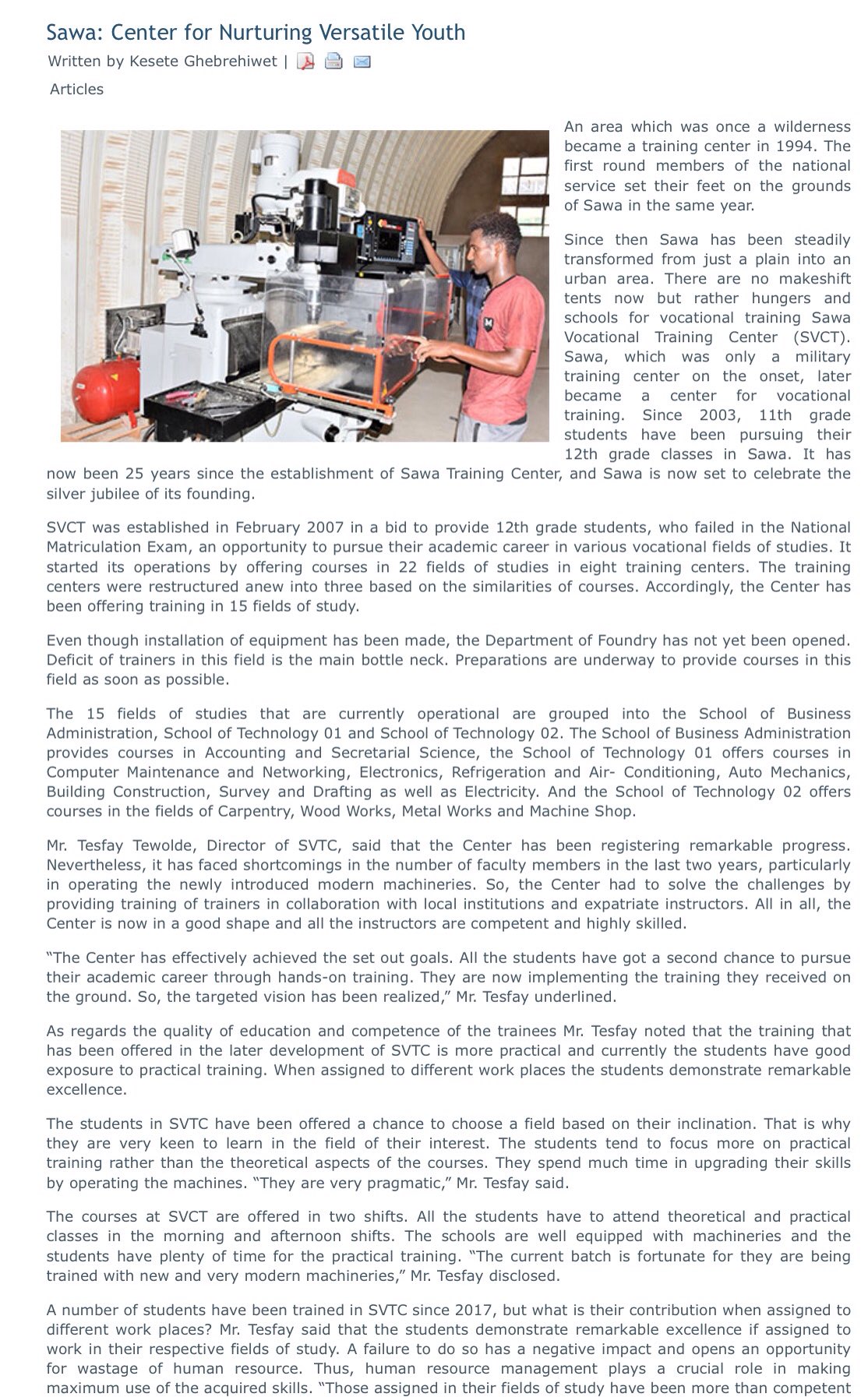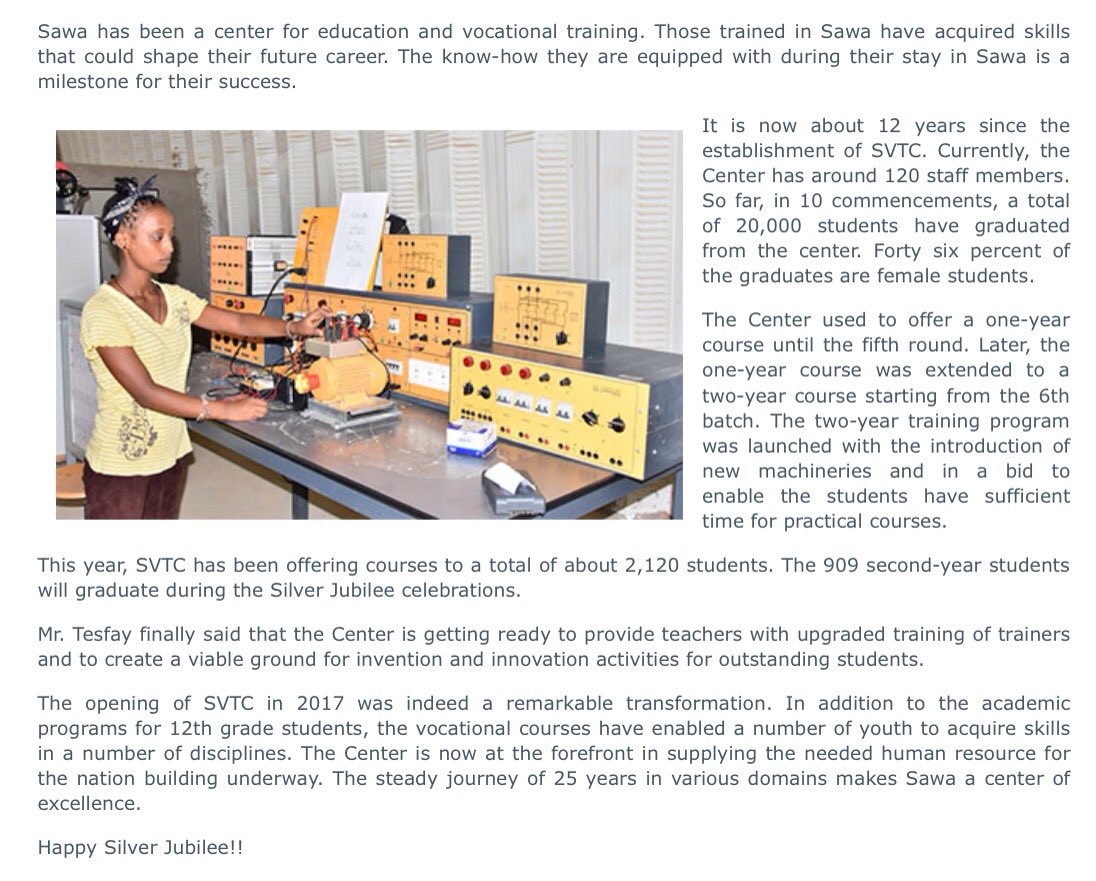MOA Releases new strategies to promote Agricultural production
Wednesday, 17 July 2019
Written by shabait Administrator
http://shabait.com/categoryblog/28921-m ... production
Ministry releases ‘Small and Medium Commercial Farmers Strategy’

The Ministry of Agriculture has released ‘
Small and Medium Commercial Farmers Strategy (SMCFS)’ at the end of May 2019. According to published documents, the overall goal of the SMCFS is to create Small and Medium Commercial Farmers that engage in highly productive, profitable agriculture value chains linked to domestic and international markets by 2023.
According to the strategy, in the Eritrean context, small and medium commercial farmers are those who supply agricultural products such as vegetables, fruits, milk and its products, egg, honey, etc. to the urban and sub-urban centres throughout the country.
So far the productivity of this category of farmers remains very low as they are using traditional technology under a business environment that has yet to be developed to be as friendly as possible. It is precisely for this reason that the Ministry of Agriculture has come up with this strategy. The set of interventions designed to improve productivity, quality and safety of the Agricultural products by this category of farmers are clustered into two:
1. Technological support
2. Enabling environment
Full version of the strategy can be obtained by contacting the email:
[email protected].
•
Ministry promotes bio- pesticides
A female farmer based in the central region of the country, around Himbrti village, proved the effective use of bio-pesticides for five years. Ms.
Genet cultivates about one hectare of land with wheat, potato, cucumber, coffee, passion fruit and garden seedlings. Different pests like white fly, aphids, fungus and others were causing serious damage to her farm before the initiation of this approach.
Mrs. Genet Bokretsion said that she was inspired by the ‘
SPORE’ magazine to adopt the use of bio-pesticides made from aloe, chili pepper and neem leaves. According to Ms. Genet, two fresh blades of aloe, a kilogram of fresh neem (
Azadirachta indica) leaves and 20 pieces of medium sized chili peppers are well cut in to small pieces and are soaked in a 20-liter water container with tight lid for 10 days. The solution or the juice is properly filtered and diluted with additional 10 liters of water. Then it is ready for direct spray against the pests.
Ms.
Leula Mekonen, Head of plant protection unit in the Ministry of Agriculture, said that the practice is very useful to destroy the pests and very commendable as it is environment-friendly and can be procured at a fair price. The plant protection unit recommends that this and other similar types of homemade bio-pesticides should pass through quick trial for the right dose/ rate and type in research for their fast and proper dissemination.
•
Regulatory Services Department safeguards used pesticide containers
The Regulatory Services Department (RSD) of the Ministry of Agriculture safeguarded around 578 empty pesticide containers which were used in the control operations against desert locust infestation this year. The RSD, after a thorough assessment of the status and whereabouts of the used containers, managed to bring them to the central collection store in Daero Pawlos, Maekel region, from April to June. The containers used to hold pesticides such as Malathion 96%, Fenetrothion 96%, Diazinone 60%, Super meed 40%, Pytroid EC, Dizon EC.
The Agro-chemicals regulatory unit of the RSD gave training on pesticides handling and environmental health and safety in line with the control operations of desert locust infestation. Moreover, the RSD announced that it will give a holistic training on environmental and health safety, pesticide management and handling of used empty containers prior to the onset of the winter season. In the year 2018, Eritrea successfully treated around 32,000 hectares of locust infested area without any damage to the crops and animal forage.
•
Desert Locust Situation Update in the Central Region

On June 20 hatching and band formation started in Yemen while risk of swarms arriving in summer breeding areas remains high. Although control operations have treated nearly 200,000 ha so far, all countries should remain vigilant and be prepared for any swarms that might arrive in Sudan and along the Indo-Pakistan border where higher than normal breeding is expected during the summer months. In Saudi Arabia, ground and aerial control operations continue against numerous groups of immature and mature adults and a few remaining hopper groups and bands in the interior between Riyadh and Hail, and near Tabuk, Wadi Dawasir, Abha and south of Kuwait. Teams treated 36 580 ha from 1 to 15 June.
Infestations are expected to decline due to dry conditions and control. Small swarms could form and move to Sudan, Yemen and perhaps the Indo-Pakistan border. In Yemen, hatching and the formation of hopper groups and bands have commenced in the interior where egg laying continues between Marib and Al Hazm and near Bayhan. Numerous mature swarms were seen in the past few days throughout the central highlands as well as on the southern coast near Aden where at least one laid eggs. More egg-laying, hatching and hopper band formation will occur in the interior, in some areas on the coast near Aden and probably on the northern Red Sea coast.
In Sudan, ground teams treated 3,700 ha of immature and mature adult groups in the Nile Valley between Abu Hamd and Dongola from 1 to 18 June. Breeding is underway in a few areas and hatching is expected to cause hoppers to form small groups. Scattered immature and mature adults were seen further south in the Baiyuda Desert towards the summer breeding areas where small swarms could arrive from Saudi Arabia and lay in areas of recent rains. In Egypt, limited ground control (354 ha) was carried out against scattered mature adults in the Western Desert near Baris and Tushka and near Aswan on 1-11 June.















